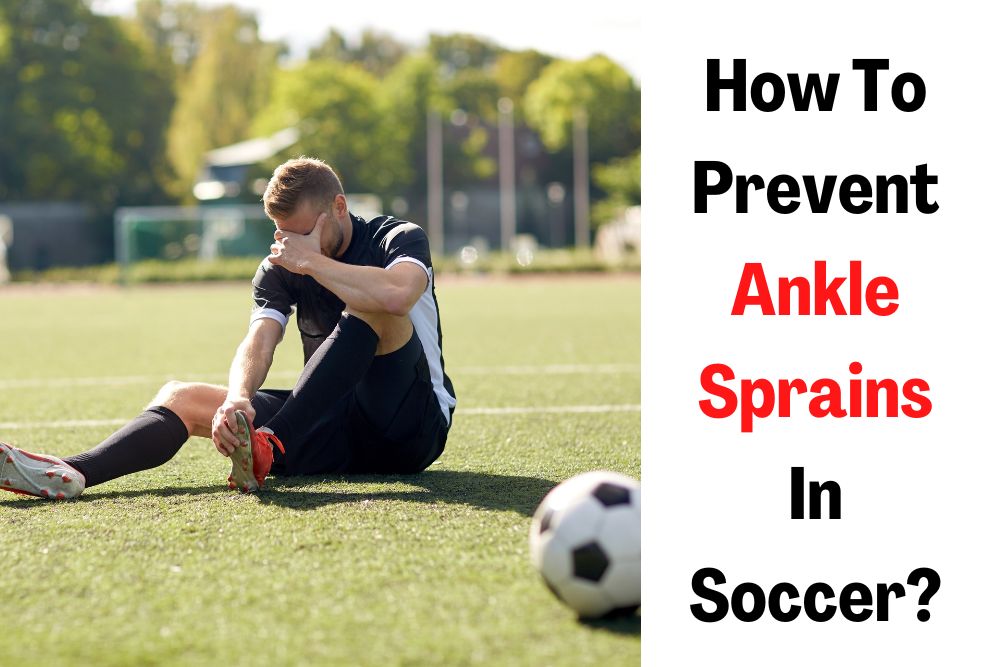Athletes of every contact sport are prone to injuries and soccer is not an exception. Since soccer players use more of their legs than any other parts of their body, it is only natural that most of their injuries will happen to their legs.
Out of all the various leg injuries that soccer players are prone to, ankle sprains are by far the most common. To add numbers to this, a study was conducted at the 2006 FIFA World Cup which showed that there were at least 12 ankle sprains for every 1,000 hours of play.
To bring it further into perspective, that means for every 2.5 games, there is at least one ankle sprain. An ankle sprain is an injury to the ligament in the ankle.
There are two types of ankle sprain namely the medial ankle sprain and the lateral ankle sprain. The medial is when there is an injury to the ligament on the inside of the ankle.
Lateral ankle sprain, on the other hand, is when the injury occurs to the ligament on the outside of the ankle. A lateral ankle sprain happens more frequently than a medial ankle sprain. Also, the lateral ankle sprain heals faster than the medial ankle sprain.
Ankle sprains are also categorized as 1st degree, 2nd degree, or 3rd degree depending on their seriousness. The 3rd degree is the most serious and it would almost be impossible for the soccer player to stand on the inflamed ankle.
Regardless of the type and degree, ankle sprains can force a player to watch the game from the sidelines for several weeks. This can have a serious impact on the career of the soccer player if it happens often.
Thankfully, reducing the frequency of ankle sprain is possible. In fact, ankle sprain in soccer is preventable and we are going to show you how.
Quick Navigation
How to prevent ankle sprains in soccer?
A study by the American College of Sports Medicine estimates that 25,000 Americans have to deal with various degrees of ankle sprains daily.
Virtually all professional soccer players have had to deal with various degrees of ankle injuries. The chances of getting ankle sprains are higher among younger soccer players, especially those in high school.

Knowing how to prevent ankle injuries will not only be beneficial to your career, but it can also save you thousands of dollars that would otherwise be paid to a physical therapist.
To a professional soccer player, the latter may not be an issue. However, for a young soccer player from an average or low financial background dealing with fix-to-play, it can be a huge cause of concern.
Ankle sprains happen when a soccer player’s foot rolls and is overstretched leading to ligament damage in the ankle. The healing time for a minor ankle sprain is usually 1 to 2 weeks. This time can be doubled or tripled for the more serious ankle sprains.
Lack of balance, improper preparation, and dirty play are some of the factors that can leave a soccer player with a nasty ankle sprain. Below are proven techniques that will prevent ankle sprain in soccer.
1. Work on your hip muscles
Xcell Movement & Performance’s Dr. Brian Campbell said that drills like the Cossack squat that strengthen the hips and increase hip mobility would eventually take the pressure out of your ankles leading to fewer episodes of ankle sprains.
For this drill, you have to spread out your legs to a wide squat position. Do a squat with your weight shifted to the left. Stay in that position for 2 to 5 seconds. Stand up and repeat with your weight shifted to the right.
If you do it properly, the knee of the leg bearing your weight should be bent forward while the other leg should be straight and form about 45 degrees with the ground.
Repeat this from side to side. Dr. Brian recommends doing this for 20 to 30 reps twice or three times weekly to enjoy the benefits.
2. Build the muscles around the lower leg
Peroneal muscles run down from the fibula and attach to different areas of the foot. Having stronger and more flexible peroneal will reduce the number of inversions and chances of coming down with an ankle sprain.
There are a series of exercises that you can do to strengthen your ankle muscles. Some of the common exercises for strengthening the ankle muscles are highlighted below.
Balancing on one leg
In addition to strengthening the ankle muscles, this exercise will also improve your balance which is a crucial skill in soccer.
As the name suggests, in this drill, stand with one leg and raise the other leg above the ground. Make sure your arms are at akimbo. The suspended leg should not touch the ground during the exercise.
There is another variation of this exercise where you will use the suspended leg to touch all the inner thigh of your standing leg. Do 10 to 12 reps three times weekly.
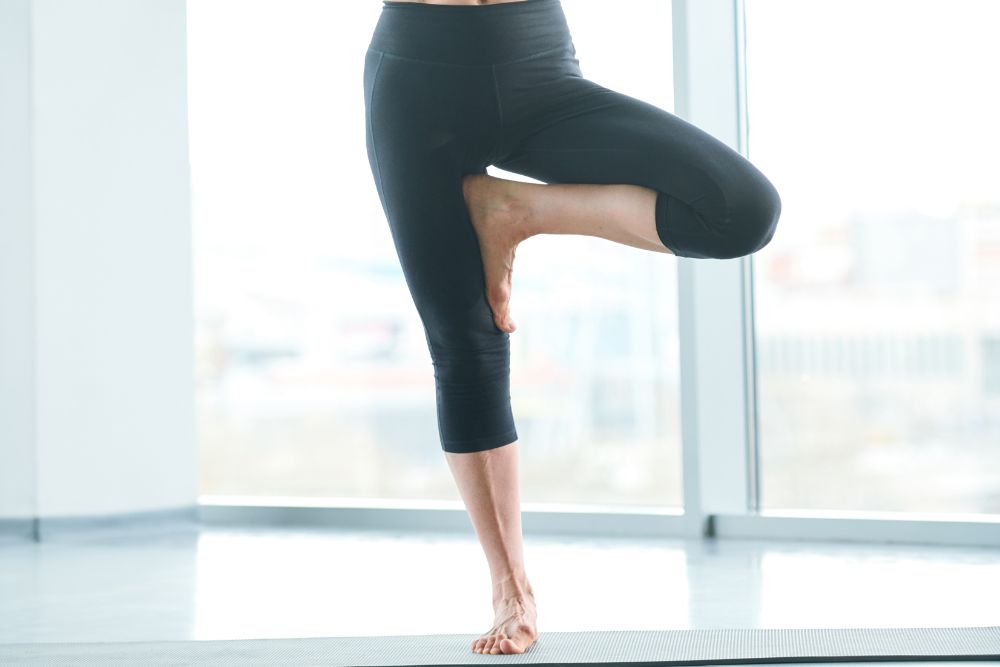
Ankle stretching
You can do the ankle stretch in a couple of ways and we are going to explain all the tricks to you. Just a quick tip; anytime you are doing the ankle stretch, make sure that the strap loops around the ball of your foot.
If the strap is on your toes, it can easily snap back and hit you. That can be painful. On the other hand, if the strap is below the ball of the foot, let’s say around your foot arc, you won’t get that proper tension required for a satisfactory ankle stretch.
While sitting down with your leg stretched forward, hold the other end of the strap to create tension between your foot and the strap. Gradually move your ankles forward and backward to work it out while making sure that your heel doesn’t lift from the floor.
Forward and backward stretch
For this ankle exercise, you will need a flexible strap and a foam roller.
Last update on 2023-11-10 / Affiliate links / Images from Amazon Product Advertising API
Step 1
Prop the leg you want to stretch with a foam roller Place your leg on the foam roller in a way that your heel is just hanging off. This increases the forward and backward movement of the ankle.
Step 2
Make a small loop around one end of the strap so that it can fit around the ball of your foot.
Step 3
Pull back on your strap until you get the right resistance. Hold the strap at that point.
Step 4
Now, gradually move your ankles backward and forward. During this movement, make sure the strap doesn’t control how fast your feet move backward and forward.
If you feel your ankle wobbling during the forward stretch, or snapping back too quickly during the backward stretch, it may be because the tension on the strap is too much. Free it up a little.
For starters, you may want to do the forward and backward movement 10 times. Increase the count and strap tension as you become more comfortable.
Sideways ankle stretch
After the forward and backward stretch, it is also important to do the sideways stretch to give your ankles an all-around workout. Follow the steps below to do that.
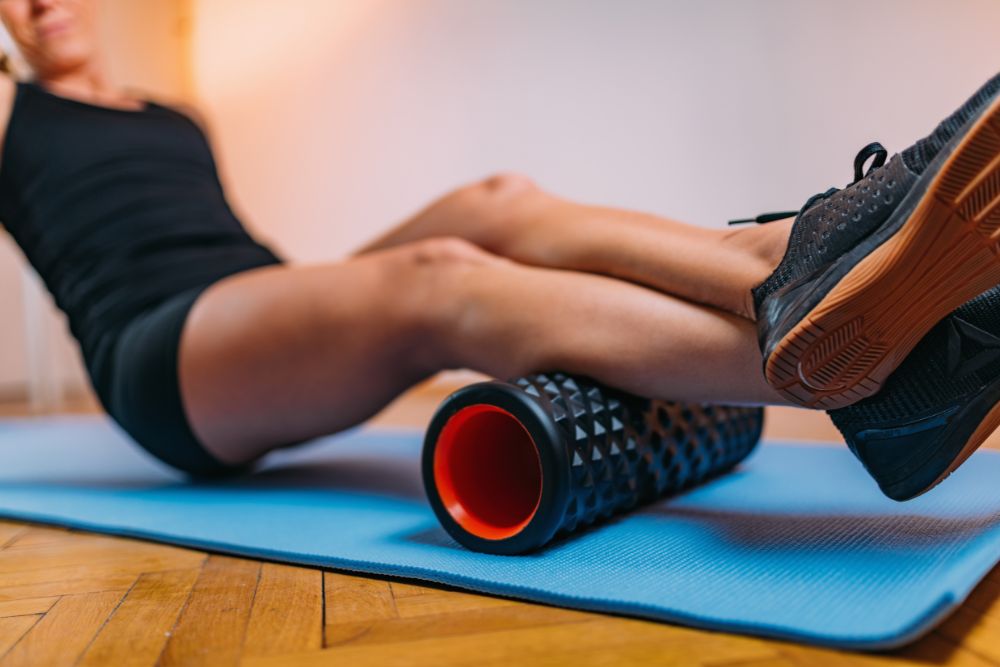
Step 1
Cross the other leg over the first leg on the foam roller. Remember, the leg you want to stretch should be the leg on top of the other leg.
For example, if you want to sideways-stretch your right ankle, prop your left leg with a foam roller. Then cross your right leg over the left leg.
Step 2
Change the angle of the strap’s tension to the side of your foot. You can do this by changing the direction of the knot on the loop of your strap to rest on your little toe. Then, wrap the strap around the foot that is directly resting on the foam roller as an anchor.
Your anchor foot should remain stationary throughout the exercise. Also, make sure that only the ankle of the workout leg is in motion. The other part should remain steady.
If you are finding it hard to keep your legs steady, you can tell a friend to help you hold down your legs.
Step 3
Start moving the ankle you want to stretch from side to side. Just like in the front and back motions, make sure that your movement is steady and gradual rather than allowing the tension on the strap to control the speed of movement of your food.
Inverted sideways stretch
The sideways stretch has two phases and you want to complete both phases for an all-around stretch experience. The second phase is the inverted ankle stretch.
As we already mentioned, it is a continuation of the sideways stretch so we will be calling it step 4 rather than step 1.
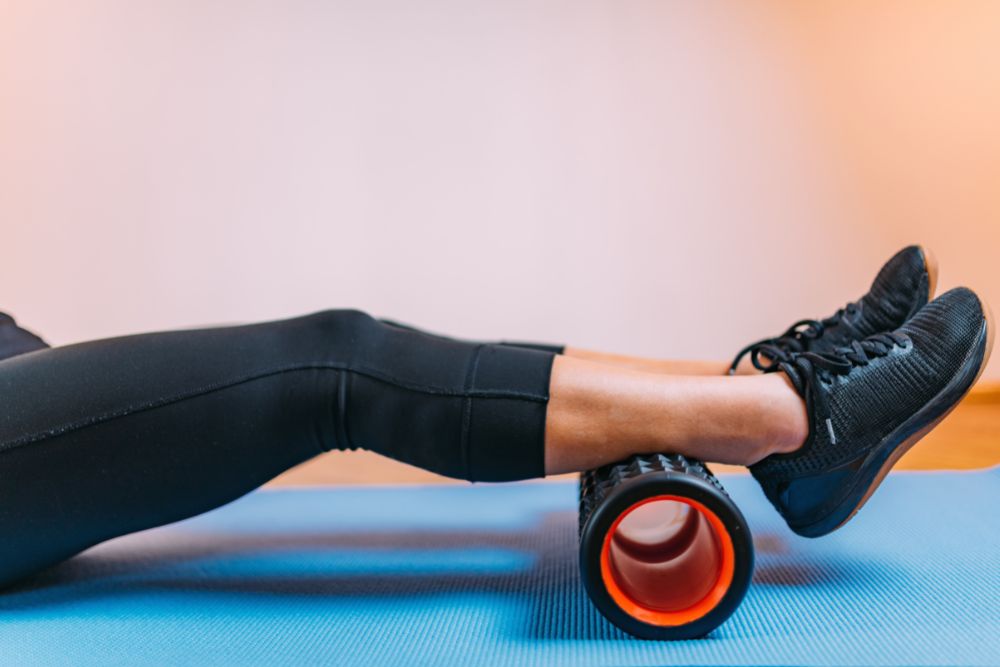
Step 4
Do the inverted sideways stretch. You can do this by moving the knot on the loop of your strap to rest on the side of your big toe. This changes the direction of the tension to the other side of your leg.
Step 5
Instead of your legs staying crossed, split them apart such that they are about 15 cm apart. Then, wrap your strap around the anchor leg to create tension.
Step 6
Start moving your ankle in the opposite direction from your anchor leg. As always, make sure that your motion is slow and steady and only your ankle should move, not the entire leg.
Standing calf stretch
The standing calf stretch is just as easy as the name sounds. All you need is a chair or any other form of vertical support that will support your weight when you lean forward.
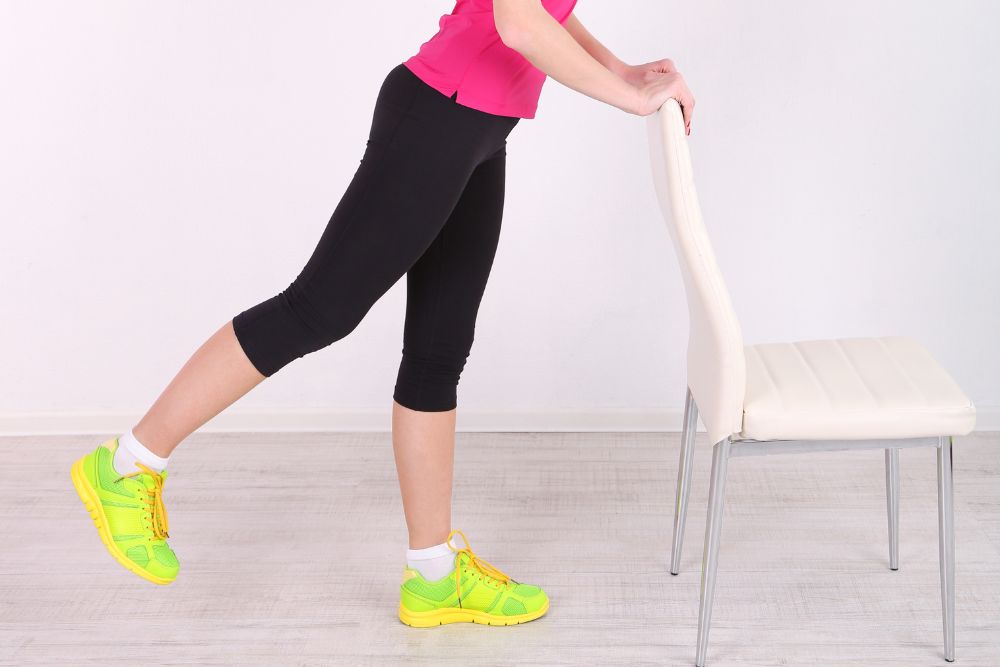
Step 1
Stand about 30 cm behind the chair or vertical support.
Step 2
Move the leg you want to stretch 30 cm backward. So, the leg you want to stretch should be 60 cm from your vertical support while your anchor leg is 30 cm from your vertical support.
Step 3
Lean forward and hold your vertical support. The leg you want to stretch should be straight while the knee of your support leg should be bent forward.
The heel of the leg you want to stretch should stay down and stead throughout the entire stretch.
Step 4
Lean forward with the help of the support until you feel a stretch on the ankle of the leg you want to stretch. Hold the stretch for about 10 seconds and return to your standing position.
If you don’t feel the stretch when you lean forward, take the leg a step backward and repeat the process.
Toe leap
For the toe leap, you may need support like a chair or your kitchen countertop for a starter. However, as you become more used to the exercise, support may not be necessary.
Holding onto the support, lift your heels from the ground until you are standing on just your toes. Hold that position for 3 to 5 seconds before gradually dropping your heels back on the ground.
Start with 10 reps and work your way up to 20 or 30 reps. When that doesn’t feel like a challenge anymore, move to a one-leg toe leap.
In the one-leg toe leap drill, stand on one leg with the other leg suspended in the air. Then, lift your heels such that only the toes and the balls of your foot are making contact with the ground.
Maintain this position for 3 to 5 seconds before bringing the flat of your foot to the ground. Repeat for 10 to 30 reps.
3. Proper warm-up before a game
If you have seen any soccer game, you would have noticed soccer players running up and down the touchline and performing different motions just before they enter the game as substitutes.
Well, it has been established by multiple studies that cold muscles are more prone to wear and tear compared to warm muscles. Likewise, a rigid muscle is more prone to injury compared to a flexible muscle.

Stretching is one of the most recommended pre-game warmup exercises. It is also highly recommended before any other major activities including training.
Soccer players trying to prevent ankle sprain should prioritize stretches that work on the ankles and the entire lower limb. Stretching helps to maintain the flexibility of the ankles making them more resistant to sprain.
4. Play more cautiously
Soccer is a very emotional game and in the heat of the actions, soccer players can throw caution to the winds. When this happens, more injuries are bound to occur.
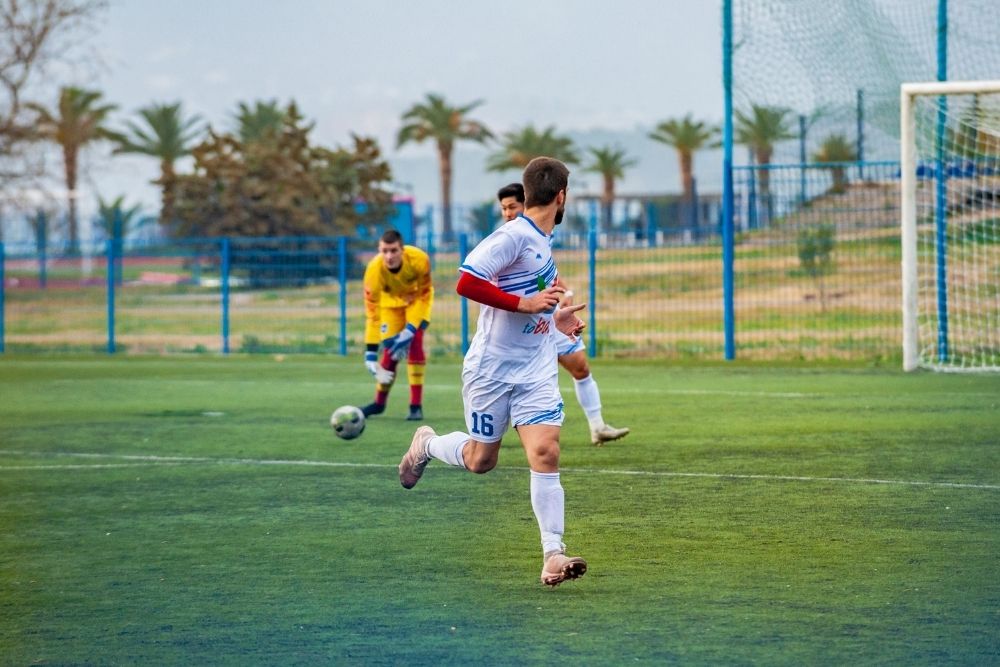
To avoid ankle sprains, soccer players should know when to make sliding tackles without the danger of being stepped on by their opponents. Also, be careful when you are around aggressive players.
Shifting your playing strategy from dribbling to quick passes can make it more difficult for aggressive players to execute tackles that may put you at risk of injuries.
5. Lock your ankles
Ankle lock is an important technique that can help soccer players improve the power of their shots. Although players that practice ankle lock does so to improve the speed and accuracy of their shots, it can also save you the pain of ankle sprain.
For example, when you trap a fast-moving ball with your foot, the force of the impact can cause your foot to snap to unnatural angles. Depending on the speed of the ball, you can end up with a nasty ankle sprain. Locking your ankle will prevent such awkward movements.
6. Tape your ankle
Taping of joints has become a popular technique used by soccer players to prevent sprain to the hand and leg joints. Because most soccer cleats don’t provide adequate ankle support, soccer players usually rely on the use of tapes to get that extra support.
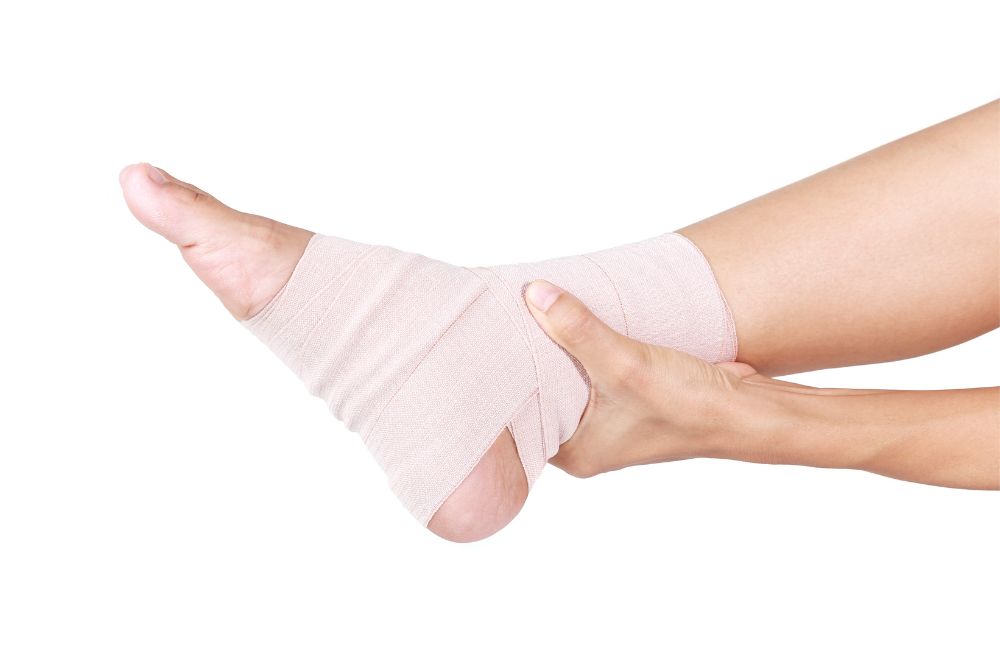
There are different ankle taping techniques used by soccer players. However, they all achieve the same result. The choice of technique usually falls back on convenience.
The main goal of ankle taping is to limit the rotating angles of the ankles which will make it more difficult for them to roll or twist out of shape. Ankle taping can either be done with athletic tape or Kinesio tape.
Some of the soccer players that are against taping the ankle say that it is restrictive. However, Kinesio tapes are usually more stretchy compared to athletic tape and will not overly restrict the flexibility of the ankle.
Last update on 2023-11-11 / Affiliate links / Images from Amazon Product Advertising API
7. Use an ankle brace
For soccer players that may not be familiar with taping and may find it time-consuming, an ankle brace provides an alternative. Ankle braces are usually made with cotton or neoprene materials and come in varying shapes.
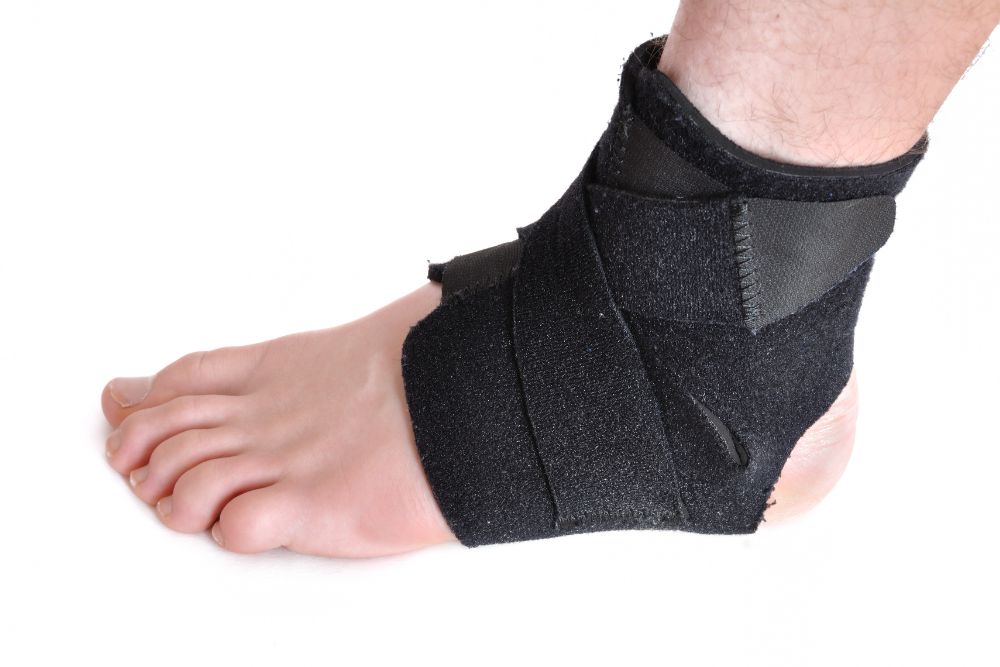
Unlike tapes, you can easily wear and take them off in a matter of seconds. Ankle braces also work by preventing the ankles from moving in unnatural positions which can lead to sprains.
- One size fits both feet and up to 11" in feet arch circumference.
- Protect the ankle and minimize the risk of injury. Perfect for chronic and acute ankle injury...
- Open heel design allows wide range of motion during activity and still provide support for the ankle...
Last update on 2023-11-10 / Affiliate links / Images from Amazon Product Advertising API
8. Wear the right-fitting soccer cleats
When you wear soccer cleats that are bigger than your feet, it gives room for your legs to move around in the cleats. This movement can lead to the buildup of pressure and friction that causes blisters.
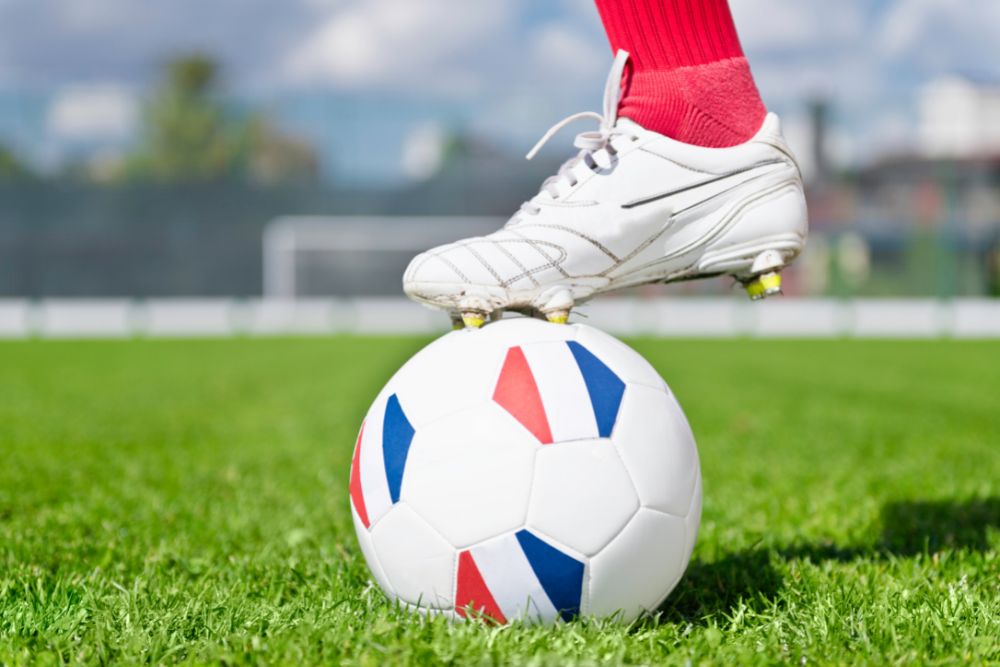
Besides the increased possibility of developing blisters, you can easily lose your balance and sprain your ankles while attempting to sprint or rapidly change direction with the ball.
Perhaps, the first step to preventing ankle sprain in soccer is wearing right-fitting soccer cleats. With cleats that don’t fit as snugly as you want, changing your lacing technique can make a huge difference.
Conclusion
An ankle sprain can also result from sudden muscle exertion. For example, if you are not used to hiking for several miles and suddenly attempt it, you risk pushing your muscles beyond their endurance point. When this happens you risk coming down with different problems including ankle sprain.
The same thing happens if you are not used to playing soccer for the full 90 minutes and suddenly want to give it a try. It is always a smart move to prepare your body for strenuous activities through incremental activities.
Always start from the bottom and walk your way up the ladder. Repetitive action builds muscle memory. Therefore, consistently practicing the steps that we highlighted can prepare your ankles for eventualities.
When you feel tired, give your muscles a rest. Tired muscles are more prone to injuries. Also, it is harder to maintain your balance when you are tired.
Hi there, I’m Jay.
Soccer is everything in my life! My friends and I have created this blog with all our enthusiasm, passion, and understanding after years of playing pro soccer. Hope you will enjoy it!
